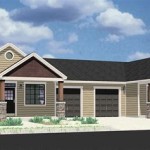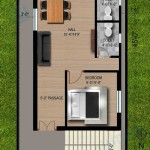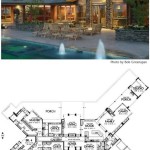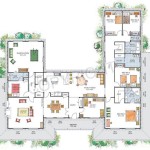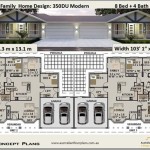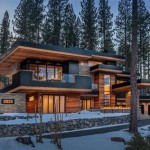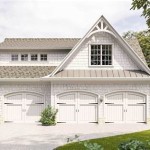Dwell House Plans: A Comprehensive Guide
Dwell house plans represent a specific approach to residential architecture, often characterized by a focus on modern design principles, sustainable materials, and efficient use of space. These plans cater to individuals and families seeking a visually striking and functional living environment that reflects contemporary aesthetics and values. This guide aims to provide a comprehensive overview of Dwell house plans, covering their defining characteristics, benefits, considerations during the planning phase, and resources for finding suitable plans.
Key Characteristics of Dwell House Plans
Dwell house plans typically exhibit several recurring characteristics that distinguish them from more traditional architectural styles. Understanding these characteristics is crucial for determining if this architectural approach aligns with individual preferences and lifestyle needs.
One of the most prominent features is the emphasis on clean lines and minimalist aesthetics. This translates to simple geometric shapes, uncluttered spaces, and a deliberate avoidance of ornamentation. The focus is on functionality and form, allowing the essential elements of the building to define its visual appeal. Large windows are frequently incorporated to maximize natural light and create a connection with the surrounding environment. These windows often feature minimal frames, further contributing to the clean, modern look.
Open floor plans are another defining element of Dwell house plans. These layouts minimize the use of interior walls, creating a sense of spaciousness and fostering greater interaction between occupants. Living areas, dining spaces, and kitchens often flow seamlessly into one another, promoting a feeling of connectivity and facilitating modern lifestyles. This open concept also allows for greater flexibility in furniture arrangement and utilization of space.
A commitment to sustainability and environmental responsibility is also typical. Dwell house plans often incorporate eco-friendly materials, energy-efficient appliances, and passive solar design principles. This can include the use of recycled materials, optimized insulation, rainwater harvesting systems, and solar panels. The goal is to minimize the environmental impact of the building and reduce long-term operating costs.
Finally, Dwell house plans often prioritize indoor-outdoor living. Features such as large sliding glass doors, decks, patios, and balconies are commonly integrated to create seamless transitions between the interior and exterior spaces. This allows residents to enjoy the benefits of natural light, fresh air, and the surrounding landscape, blurring the lines between the indoors and outdoors.
Benefits of Choosing Dwell House Plans
Selecting Dwell house plans offers a range of potential benefits, addressing both aesthetic preferences and practical considerations. These benefits can include enhanced visual appeal, improved functionality, and increased sustainability.
The modern aesthetic of Dwell house plans can significantly enhance the visual appeal of a property. The clean lines, minimalist design, and emphasis on natural light create a sophisticated and visually appealing living environment. This can be particularly attractive to individuals who appreciate contemporary design trends and seek a home that reflects their personal style. The focus on simplicity and uncluttered spaces can also contribute to a sense of calm and tranquility within the home.
The functional design of Dwell house plans can improve the overall living experience. Open floor plans facilitate better flow and interaction between occupants, while large windows maximize natural light and create a more inviting atmosphere. The emphasis on indoor-outdoor living allows residents to enjoy the benefits of the surrounding environment, extending the living space and providing opportunities for relaxation and recreation.
The incorporation of sustainable materials and energy-efficient features can reduce the environmental impact of the home and lower long-term operating costs. This can lead to significant savings on energy bills and water consumption, as well as a reduced carbon footprint. The use of durable and long-lasting materials can also minimize the need for repairs and replacements, further contributing to cost savings over time.
Furthermore, the minimalist design of Dwell house plans can promote a more organized and clutter-free living environment. The emphasis on simplicity and functionality encourages residents to prioritize essential items and avoid unnecessary possessions. This can lead to a more peaceful and efficient living space.
Considerations During the Planning Phase
Before committing to a Dwell house plan, it is essential to carefully consider several factors to ensure that the plan meets individual needs and aligns with the specific site conditions. This includes evaluating lifestyle requirements, assessing site characteristics, and understanding budget constraints.
It is crucial to accurately assess lifestyle requirements and determine the specific needs of the occupants. This includes considering the number of bedrooms and bathrooms required, the desired size and layout of living spaces, and any specific requirements for home offices, recreational areas, or storage. Think about how the space will be used on a daily basis, and ensure that the plan provides adequate functionality and comfort for all occupants. Consider future needs as well, such as the possibility of expanding the family or accommodating elderly relatives.
The characteristics of the building site must also be carefully assessed. This includes considering the topography, soil conditions, orientation, and existing vegetation. The slope of the land can impact the foundation design and require additional excavation or retaining walls. Soil conditions can affect the stability of the building and the need for specialized foundation systems. The orientation of the site will influence the amount of natural light and solar gain, which can impact energy efficiency. Existing trees and vegetation can provide shade and privacy, but may also require removal or relocation.
Budget constraints are a crucial consideration during the planning phase. It is essential to establish a realistic budget that accounts for all costs associated with the project, including design fees, construction materials, labor costs, permits, and landscaping. Obtain multiple bids from qualified contractors and compare prices carefully. It is also important to factor in contingency funds to cover unexpected expenses or changes during the construction process. Consider phasing the project if necessary to spread out costs over time.
Finally, it is important to research local building codes and regulations and ensure that the chosen Dwell house plan complies with all applicable requirements. This may include zoning regulations, building permits, environmental regulations, and accessibility requirements. Consult with local building officials or experienced architects to ensure compliance and avoid potential delays or penalties.
Resources for Finding Dwell House Plans
Numerous resources are available for individuals seeking Dwell house plans, ranging from online databases and architecture firms to pre-designed plans and custom design services. Exploring these resources can help identify suitable options and facilitate the design process.
Online databases offer a vast selection of pre-designed Dwell house plans from various architects and designers. These databases typically allow users to search for plans based on specific criteria, such as square footage, number of bedrooms, style, and budget. Many databases also provide detailed floor plans, elevations, and 3D renderings, allowing users to visualize the design and assess its suitability. Some popular online databases include Dwell, ArchDaily, and Houzz.
Architecture firms specializing in modern design often offer custom design services for Dwell-style homes. Working with an architect allows for a more personalized approach, tailoring the design to meet specific needs and preferences. An architect can also provide expert guidance on site selection, building codes, and construction management. Research local architecture firms with a proven track record in modern residential design and review their portfolios to assess their style and expertise.
Pre-designed Dwell house plans offer a more affordable and convenient alternative to custom design services. These plans are typically prepared by experienced architects and engineers and are ready to be submitted for building permits. Pre-designed plans can be modified to some extent to accommodate specific site conditions or personal preferences. However, the level of customization may be limited compared to a fully custom design.
Consult with a qualified builder or contractor experienced in modern construction techniques. A builder can provide valuable insights on the feasibility of the design, the cost of construction, and the availability of materials. They can also help identify potential challenges or issues and offer solutions to ensure a successful project. Obtain multiple bids from qualified builders and compare their prices, experience, and references.

The Ultimate Guide To Prefab 65 Modular Home Resources By Location Construction And Dwell

Discover The 5 Ultimate 20x30 House Plans For Your Dream Home

The Floor Plans Yellow Brick Home

9 Prefab Tiny Homes You Can Buy For Your Backyard In 2024

Dwell Is Now Ing Minimalist Prefab Adus

Top Prefab Home Companies In Dwell

Dwell Subscription Buy At Newsstand Co Home Interiors

Everything You Need To Know About Prefab Adus Field Mag

Shed Tiny House Cabin Plans Small Den

Shed Tiny House Cabin Plans Small Den
Related Posts

